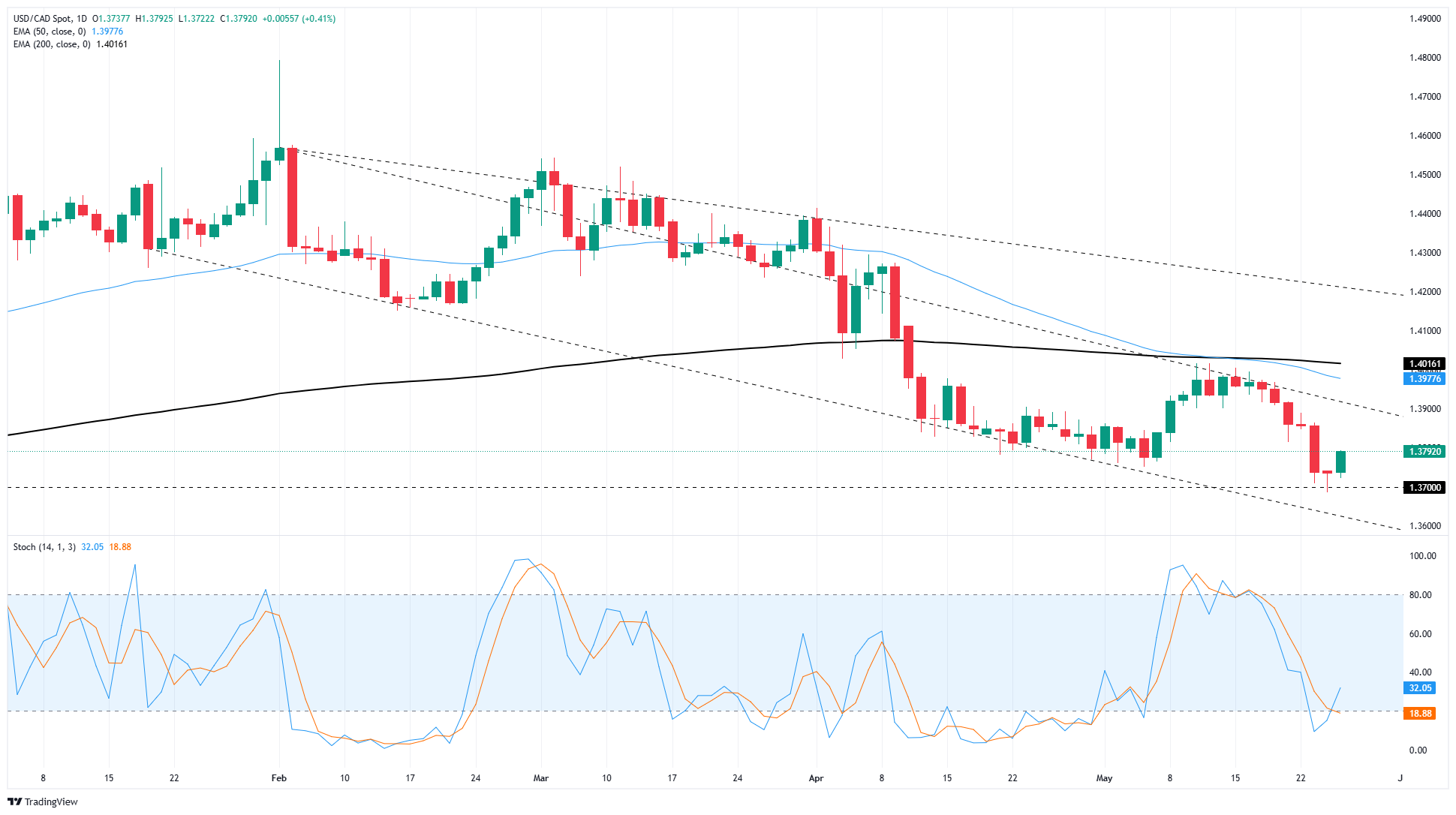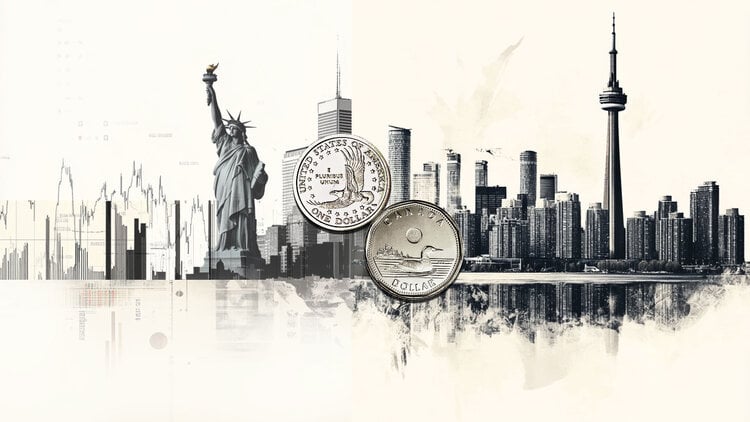- The Canadian Dollar lost ground against the US Dollar on Tuesday.
- Canadian GDP growth figures loom ahead later in the week.
- Investor confidence has rebounded following fresh tariff delays, bolstering the US dollar.
The Canadian Dollar (CAD) lost ground against the US Dollar (USD) on Tuesday, snapping a six-session winning streak for the Loonie and pushing USD/CAD back above 1.3750 as trade headlines dominate the market cycle. Canadian Gross Domestic Product (GDP) growth is due later this week, on Friday, and serves as this week’s only noteworthy Canadian data point.
Canadian GDP is bearing the brunt of the trade war burden, with median market forecasts expecting a sharp decline in headline annual GDP growth during the first quarter. However, forecasts have consistently undershot Canadian GDP for the past five straight months as investor sentiment underestimates the Canadian economy. Canadian GDP will undoubtedly benefit from businesses front-loading industrial and warehouse orders during Q1 to get ahead of tariffs and trade taxes imposed by the Trump administration, which came after the quarterly cutoff period.
Daily digest market movers: Another tariff delay sparks investor sentiment, pushing the Greenback higher
- US President Donald Trump walked back his own threats of a new 50% tariff on European goods, delaying the imposition of the new import taxes until July 9.
- Canadian GDP numbers for Q1 are slated for Friday, and are expected to sink to 1.7% YoY from 2.6%.
- However, market forecasts of Canadian GDP have run under actual results for five straight months.
- The Canadian economy is weakening due to a multitude of factors, and nerves have been fraying, particularly in trade. However, investors should expect an uptick in wholesale purchasing and warehousing increases after businesses spent the first quarter stockpiling resources, which could support the spending portion of GDP.
- Key US inflation figures are also due on Friday, with the latest Personal Consumption Expenditure Price Index (PCE) inflation set to be published at the same time as Canadian GDP, promising a volatile Friday market window.
Canadian Dollar price forecast
Tuesday’s bullish turnaround has clipped USD/CAD’s six-day losing streak, pulling the pair away from a continued decline to the bottom range of a descending channel on the daily candlesticks. An extended bullish push will see the pair running into a hefty technical resistance zone between the 1.3900 handle and the 200-day Exponential Moving Average (EMA) near 1.4000.
USD/CAD daily chart

Canadian Dollar FAQs
The key factors driving the Canadian Dollar (CAD) are the level of interest rates set by the Bank of Canada (BoC), the price of Oil, Canada’s largest export, the health of its economy, inflation and the Trade Balance, which is the difference between the value of Canada’s exports versus its imports. Other factors include market sentiment – whether investors are taking on more risky assets (risk-on) or seeking safe-havens (risk-off) – with risk-on being CAD-positive. As its largest trading partner, the health of the US economy is also a key factor influencing the Canadian Dollar.
The Bank of Canada (BoC) has a significant influence on the Canadian Dollar by setting the level of interest rates that banks can lend to one another. This influences the level of interest rates for everyone. The main goal of the BoC is to maintain inflation at 1-3% by adjusting interest rates up or down. Relatively higher interest rates tend to be positive for the CAD. The Bank of Canada can also use quantitative easing and tightening to influence credit conditions, with the former CAD-negative and the latter CAD-positive.
The price of Oil is a key factor impacting the value of the Canadian Dollar. Petroleum is Canada’s biggest export, so Oil price tends to have an immediate impact on the CAD value. Generally, if Oil price rises CAD also goes up, as aggregate demand for the currency increases. The opposite is the case if the price of Oil falls. Higher Oil prices also tend to result in a greater likelihood of a positive Trade Balance, which is also supportive of the CAD.
While inflation had always traditionally been thought of as a negative factor for a currency since it lowers the value of money, the opposite has actually been the case in modern times with the relaxation of cross-border capital controls. Higher inflation tends to lead central banks to put up interest rates which attracts more capital inflows from global investors seeking a lucrative place to keep their money. This increases demand for the local currency, which in Canada’s case is the Canadian Dollar.
Macroeconomic data releases gauge the health of the economy and can have an impact on the Canadian Dollar. Indicators such as GDP, Manufacturing and Services PMIs, employment, and consumer sentiment surveys can all influence the direction of the CAD. A strong economy is good for the Canadian Dollar. Not only does it attract more foreign investment but it may encourage the Bank of Canada to put up interest rates, leading to a stronger currency. If economic data is weak, however, the CAD is likely to fall.

